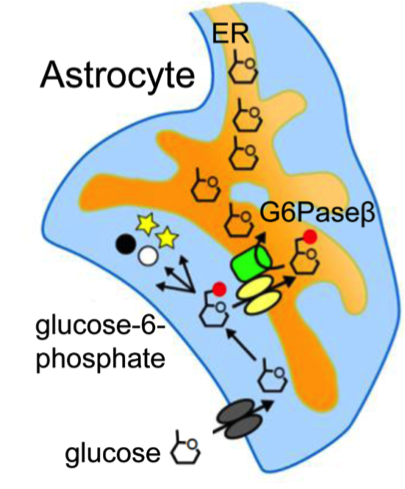
Submitted by Abbi Abbioui on Tue, 27/11/2018 - 09:15
Margit Muller (in Colin Taylor’s lab) has shown, using optical sensors that report glucose concentrations within the endoplasmic reticulum (ER), that a hitherto enigmatic enzyme, glucose-6-phosphatase-β, is required for effective glucose uptake by astrocytes...
Astrocytes, the most abundant cells in the brain, support the activity of neurones by providing them with essential nutrients. Margit Muller (in Colin Taylor’s lab) has shown, using optical sensors that report glucose concentrations within the endoplasmic reticulum (ER), that a hitherto enigmatic enzyme, glucose-6-phosphatase-β, is required for effective glucose uptake by astrocytes. The authors propose, in a recent paper in Current Biology, that the ER provides an intracellular highway in astrocytes that allows glucose to be transported, protected from further metabolism, within the ER lumen from perivascular endfeet to the perisynaptic processes that feed neurons.
Müller, MS, Fouyssac, M & Taylor, CW (2018) Effective glucose uptake by human astrocytes requires its sequestration in the endoplasmic reticulum by glucose-6-phosphatase-β. Current Biology 28, 3481-3486.
